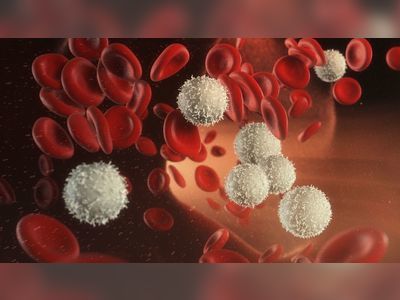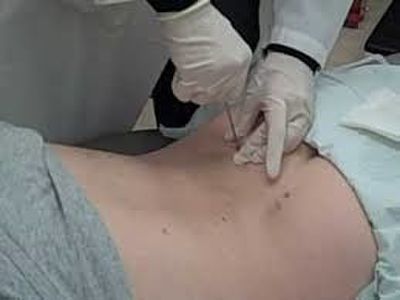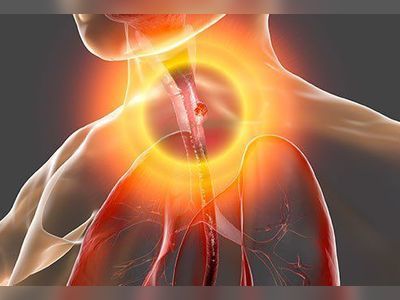
Hypoglycemia in Kids with Type 1 Diabetes
Overview
In type 1 diabetes, the pancreas can’t make enough insulin, a hormone that moves sugar from the bloodstream into the cells for energy. A lack of insulin causes blood sugar levels to rise.
High blood sugar, called hyperglycemia, causes lasting health problems without treatment. It can damage blood vessels, nerves, and organs like the eyes and kidneys.
If your child has type 1 diabetes, they’ll need your help with counting carbohydrates and doing regular blood sugar checks. The goal is to keep their blood sugar from getting too high.
A normal blood sugar range is about 70 to 140 milligrams per deciliter (mg/dL). That range can vary slightly based on your child’s age, the foods they eat, and what medications they take.
Taking insulin will help keep your child’s blood sugar levels stable. But insulin treatment can cause another problem - low blood sugar, or hypoglycemia - especially if the dose is too high. Hypoglycemia is when your child’s blood sugar falls to less than 70 mg/dL.
Low blood sugar is common in kids with type 1 diabetes, but it’s treatable. Here’s how to spot the signs, and what to do if your child’s blood sugar drops.
What causes hypoglycemia?
Hypoglycemia is sometimes called an “insulin reaction.” The most likely cause is taking too much insulin or another blood sugar lowering medication. Taking the wrong dose or type of insulin can also cause blood sugar to drop.
Children can also get hypoglycemia from:
missing meals or eating later than usual
eating too little food
not counting carbohydrates correctly
exercising too much without eating enough
vomiting or having diarrhea
getting injured
taking sulfonylureas or other diabetes medications
Why is hypoglycemia a problem?
Our bodies use glucose for energy. Glucose fuels every cell and organ, especially the brain.
When blood sugar level drops, your child’s brain can’t function properly. If hypoglycemia isn’t treated promptly, it can become severe.
Severe hypoglycemia is an emergency that requires immediate medical treatment. If it happens, it can lead to serious complications like:
seizures
coma
brain damage
Severe hypoglycemia is preventable. You can ensure your child doesn’t experience it by watching for signs of low blood sugar, and treating it right away. Your child’s healthcare provider will also likely talk to you about carrying an emergency medication called glucagon that treats severe hypoglycemia immediately.
What are the symptoms?
Sometimes young children can’t identify low blood sugar or tell you how they feel. Look for these signs that your child’s blood sugar is too low:
shaking
sweating
dizziness
blurred vision
hunger
nausea
moodiness
irritability
crying for no reason
headache
pale skin
jerky movements
trouble paying attention
changes in behavior
confusion
seizures
A blood sugar check will let you know for sure whether the problem is hypoglycemia. Because other problems can also cause these symptoms, call your doctor if you’re not sure or if giving your child glucose doesn’t improve their symptoms.
How to treat hypoglycemia
To correct low blood sugar, give your child a food containing quick-absorbing sugar, like these:
hard candy
orange juice or another type of juice
cake icing
milk
You can give older children one of these foods or drinks:
soda
glucose tablets
Skittles or other candies
Ask your child’s healthcare provider how much sugar to give, based on your child’s age and weight. It’s important to get their advice on this, since it’s specific to your child and their needs. In general, the American Diabetes Association notes that:
infants may need 6 grams of sugar
toddlers may need 8 grams of sugar
small children may need 10 grams of sugar
older children and teenagers may need 15 grams of sugar, which is the same as the recommendation for adults
Wait 15 minutes after giving the sugary food or drink, then check your child’s blood sugar level again. If it’s still low, give them more. Keep checking their blood sugar level until it gets above 100 mg/dL.
Once blood sugar is back to normal, keep the levels stable by giving your child a snack containing a mix of complex carbohydrates, fat, and protein. Peanut butter on whole-wheat crackers or a cheese sandwich on whole-grain bread are good choices.
Preventing low blood sugar
Most kids with type 1 diabetes will have hypoglycemia at one time or another. But if your child often gets low blood sugar, ask the doctor who treats their diabetes whether a change in treatment is needed.
Test your child’s blood sugar throughout the day to make sure you’re giving the right insulin dose. Make sure you or your child knows how to test correctly. If you need a refresher, ask the doctor or a diabetes nurse for a quick review.
Keep on top of your child’s insulin regimen. Make sure they take the right dose of medication at the right time each day to keep their blood sugar levels steady.
To prevent hypoglycemia, make sure your child:
uses the glucose test strips that match the meter
does regular blood sugar checks and takes insulin on the schedule the doctor recommends
gets enough to eat during the day and doesn’t skip meals
does a blood sugar check before exercising (if blood sugar is low, your child can eat a small snack to bring it back in range)
monitors blood sugar levels before bed, and overnight if needed
Tell the teachers at your child’s school how to identify the signs of low blood sugar. Send your child to school with candy, juice, or another quick-acting form of sugar to stop hypoglycemia attacks when they do happen.
In case of severe hypoglycemia, your child’s healthcare provider will likely advise you to carry glucagon medication for your child. Glucagon is a medication that rapidly treats severe hypoglycemia.
You can also store glucagon medication with caregivers in any place your child goes frequently, such as school. Talk to your child’s school about ensuring that there’s someone on staff who can give the medication if needed.
When to seek medical help
Call your child’s healthcare provider if your child often gets hypoglycemia, or if it’s often difficult to manage your child’s blood sugar levels. They may need to make a change to your child’s treatment plan.
Get emergency medical help right away if your child has severe hypoglycemia, which is a life-threatening emergency. Call 911 or your local emergency number.
Signs of severe hypoglycemia include:
fainting
losing consciousness
seizures
If a child shows symptoms of severe hypoglycemia, don’t try to force them to eat or drink because they may choke. They’ll need an adult to give them glucagon, an emergency medication that rapidly raises blood sugar. If you have access to glucagon medication, give it to them, and call for emergency medical help.
It’s important to keep glucagon medication on hand, in case of an emergency. If you don’t already have glucagon medication for your child, talk to your child’s healthcare provider about how to get it.
The takeaway
Low blood sugar levels cause hypoglycemia. This can happen from taking too much insulin or another medication to lower the blood sugar.
Hypoglycemia in kids with type 1 diabetes is common and treatable. It’s important to familiarize yourself with the symptoms of hypoglycemia so that you and your child can manage their blood sugar levels effectively. This will help them stay healthy and avoid serious complications.











